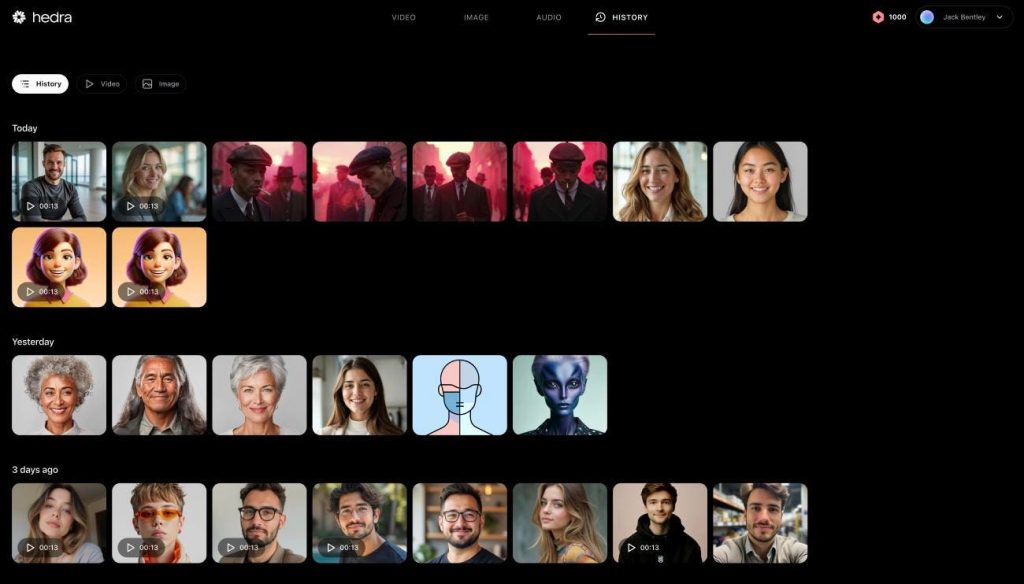Making video with AI
Hedra
Investors can’t get enough of start-up artificial intelligence (AI) video generators. Data from Tracxn suggests these businesses have already raised more than $500 million of new funding in 2025 – more than in any previous year. The biggest rounds have included a $308 million raise from New York-based Runway and London-headquartered Synthesia’s $180 million investment. And now California’s Hedra is joining the party.
Hedra, founded in San Francisco in 2024, will today announce it has raised $32 million of new finance from investors led by a16z Infra, with existing investors including a16z speedrun, Abstract and Index Ventures also participating. This round brings the total amount of money raised by the company to $43 million.
Investors’ appetite for the growing number of young businesses in the space reflects the rapid growth in the market, itself a reflection of the pace at which AI video technology is advancing. Allied Market Research estimates the global market for these ventures was worth around $600 million in 2023 – but predicts that this figure will rise to $9.3 billion by 2033. That represents annual growth of more than 30% a year.
The key is to make it as easy as possible to create AI video so that you capture a wider base of customers, says Michael Lingelbach, the founder and CEO of Hedra. In particular, he expects there to be huge demand from enterprises looking to create AI video for brand-building and marketing activity; these firms will need workflow tools that make the process of creation easy, as well as a high-quality output.
“Video AI has huge advantages for enterprise,” Lingelbach says. “They can get content out very rapidly to capture market moments or cultural references; they can iterate content fast, to test which video performs best, say, or to produce video for multiple local markets in multiple languages, and they can create content that really engages their audiences.”
This is an emerging trend. Until relatively recently, AI video was largely the preserve of enthusiastic individual creators, often producing content with the aim of going viral on social media platforms. Hedra, for example, says 2.5 million users have already used its technology to make such videos.
More recently, however, enterprises have begun to see the potential of this medium, particularly as quality has improved. Many platforms only allow you to make short clips with no sound, but the latest models are far more expansive. Hedra, founded in 2024, launched the latest version of its model, dubbed Character-3, earlier this year, and Lingelback says it has already seen significant interest from enterprise users.
Matt Bornstein, partner at Andreessen Horowitz, the investment firm behind a16z Infra, argues that Hedra’s latest model is a significant step forward for the sector, offering the opportunity to make broader content that solutions focused more narrowly on avatars or specific use cases.
“Character-3 is a breakthrough model that integrates text, video and audio to create highly controllable, expressive characters,” he says. “If you want to create AI-driven actors, it’s the best model in the market by far.”
Rival providers will naturally make similar claims for their own platforms – and there is no doubt that the sector now faces something of an arms race. This year’s spate of fund raising reflects the need for significant investment in product development and engineering teams as firms vie for market share. The threat of big tech also looms large – OpenAI and Adobe have already launched video generators while Google and Meta have projects in development.
The race is on. “This new investment will help us develop a new generation of AI-powered video experiences that are interactive, real-time, and personalised,” said Victor Riparbelli, CEO and co-founder of Synthesia, when it announced its fund raising earlier this year. “[That offers] possibilities we could have only imagined when we founded the company in 2017.”
At Runway, CEO Cristóbal Valenzuela made a similar point when unveiling its funding round last month, pointing to the progress made with its newly released Gen-4 mode. “These advancements aren’t merely incremental improvements; they form the foundation for an entirely new approach to media,” he said.
For now, with so many players now scaling at pace, it’s difficult to call the likely winners. Investors, certainly, are hedging their bets. Still, for the AI video sector as a whole, the future looks bright, with a new generation of platforms making it more straightforward than ever before for everyone from individual users to large enterprises to produce high-quality content.

